

An Essay on Criticism Summary & Analysis by Alexander Pope
- Line-by-Line Explanation & Analysis
- Poetic Devices
- Vocabulary & References
- Form, Meter, & Rhyme Scheme
- Line-by-Line Explanations
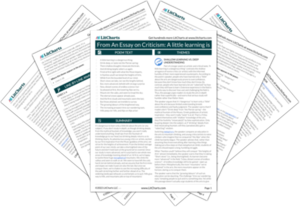
Alexander Pope's "An Essay on Criticism" seeks to lay down rules of good taste in poetry criticism, and in poetry itself. Structured as an essay in rhyming verse, it offers advice to the aspiring critic while satirizing amateurish criticism and poetry. The famous passage beginning "A little learning is a dangerous thing" advises would-be critics to learn their field in depth, warning that the arts demand much longer and more arduous study than beginners expect. The passage can also be read as a warning against shallow learning in general. Published in 1711, when Alexander Pope was just 23, the "Essay" brought its author fame and notoriety while he was still a young poet himself.
- Read the full text of “From An Essay on Criticism: A little learning is a dangerous thing”
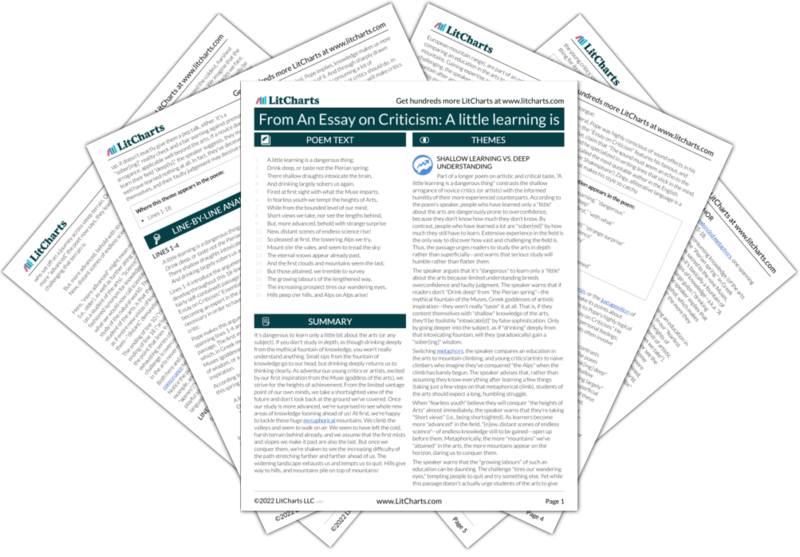
The Full Text of “From An Essay on Criticism: A little learning is a dangerous thing”
1 A little learning is a dangerous thing;
2 Drink deep, or taste not the Pierian spring:
3 There shallow draughts intoxicate the brain,
4 And drinking largely sobers us again.
5 Fired at first sight with what the Muse imparts,
6 In fearless youth we tempt the heights of Arts,
7 While from the bounded level of our mind,
8 Short views we take, nor see the lengths behind,
9 But, more advanced, behold with strange surprise
10 New, distant scenes of endless science rise!
11 So pleased at first, the towering Alps we try,
12 Mount o'er the vales, and seem to tread the sky;
13 The eternal snows appear already past,
14 And the first clouds and mountains seem the last;
15 But those attained, we tremble to survey
16 The growing labours of the lengthened way,
17 The increasing prospect tires our wandering eyes,
18 Hills peep o'er hills, and Alps on Alps arise!
“From An Essay on Criticism: A little learning is a dangerous thing” Summary
“from an essay on criticism: a little learning is a dangerous thing” themes.

Shallow Learning vs. Deep Understanding
- See where this theme is active in the poem.
Line-by-Line Explanation & Analysis of “From An Essay on Criticism: A little learning is a dangerous thing”
A little learning is a dangerous thing; Drink deep, or taste not the Pierian spring: There shallow draughts intoxicate the brain, And drinking largely sobers us again.

Fired at first sight with what the Muse imparts, In fearless youth we tempt the heights of Arts, While from the bounded level of our mind, Short views we take, nor see the lengths behind,
But, more advanced, behold with strange surprise New, distant scenes of endless science rise!
Lines 11-14
So pleased at first, the towering Alps we try, Mount o'er the vales, and seem to tread the sky; The eternal snows appear already past, And the first clouds and mountains seem the last;
Lines 15-18
But those attained, we tremble to survey The growing labours of the lengthened way, The increasing prospect tires our wandering eyes, Hills peep o'er hills, and Alps on Alps arise!
“From An Essay on Criticism: A little learning is a dangerous thing” Symbols

The Mountains/Alps
- See where this symbol appears in the poem.
“From An Essay on Criticism: A little learning is a dangerous thing” Poetic Devices & Figurative Language
Alliteration.
- See where this poetic device appears in the poem.
Extended Metaphor
“from an essay on criticism: a little learning is a dangerous thing” vocabulary.
Select any word below to get its definition in the context of the poem. The words are listed in the order in which they appear in the poem.
- A little learning
- Pierian spring
- Bounded level
- Short views
- The lengthened way
- See where this vocabulary word appears in the poem.
Form, Meter, & Rhyme Scheme of “From An Essay on Criticism: A little learning is a dangerous thing”
Rhyme scheme, “from an essay on criticism: a little learning is a dangerous thing” speaker, “from an essay on criticism: a little learning is a dangerous thing” setting, literary and historical context of “from an essay on criticism: a little learning is a dangerous thing”, more “from an essay on criticism: a little learning is a dangerous thing” resources, external resources.
The Poem Aloud — Listen to an audiobook of Pope's "Essay on Criticism" (the "A little learning" passage starts at 12:57).
The Poet's Life — Read a biography of Alexander Pope at the Poetry Foundation.
"Alexander Pope: Rediscovering a Genius" — Watch a BBC documentary on Alexander Pope.
More on Pope's Life — A summary of Pope's life and work at Poets.org.
Pope at the British Library — More resources and articles on the poet.
LitCharts on Other Poems by Alexander Pope
Ode on Solitude
Everything you need for every book you read.

Literary Theory and Criticism
Home › Analysis of Alexander Pope’s An Essay on Criticism
Analysis of Alexander Pope’s An Essay on Criticism
By NASRULLAH MAMBROL on July 8, 2020 • ( 1 )
An Essay on Criticism (1711) was Pope’s first independent work, published anonymously through an obscure bookseller [12–13]. Its implicit claim to authority is not based on a lifetime’s creative work or a prestigious commission but, riskily, on the skill and argument of the poem alone. It offers a sort of master-class not only in doing criticism but in being a critic:addressed to those – it could be anyone – who would rise above scandal,envy, politics and pride to true judgement, it leads the reader through a qualifying course. At the end, one does not become a professional critic –the association with hired writing would have been a contaminating one for Pope – but an educated judge of important critical matters.

But, of the two, less dang’rous is th’ Offence, To tire our Patience, than mislead our Sense: Some few in that, but Numbers err in this, Ten Censure wrong for one who Writes amiss; A Fool might once himself alone expose, Now One in Verse makes many more in Prose.
The simple opposition we began with develops into a more complex suggestion that more unqualified people are likely to set up for critic than for poet, and that such a proliferation is serious. Pope’s typographically-emphasised oppositions between poetry and criticism, verse and prose,patience and sense, develop through the passage into a wider account of the problem than first proposed: the even-handed balance of the couplets extends beyond a simple contrast. Nonetheless, though Pope’s oppositions divide, they also keep within a single framework different categories of writing: Pope often seems to be addressing poets as much as critics. The critical function may well depend on a poetic function: this is after all an essay on criticism delivered in verse, and thus acting also as poetry and offering itself for criticism. Its blurring of categories which might otherwise be seen as fundamentally distinct, and its often slippery transitions from area to area, are part of the poem’s comprehensive,educative character.
Literary Criticism of Alexander Pope
Addison, who considered the poem ‘a Master-piece’, declared that its tone was conversational and its lack of order was not problematic: ‘The Observations follow one another like those in Horace’s Art of Poetry, without that Methodical Regularity which would have been requisite in a Prose Author’ (Barnard 1973: 78). Pope, however, decided during the revision of the work for the 1736 Works to divide the poem into three sections, with numbered sub-sections summarizing each segment of argument. This impluse towards order is itself illustrative of tensions between creative and critical faculties, an apparent casualness of expression being given rigour by a prose skeleton. The three sections are not equally balanced, but offer something like the thesis, antithesis, and synthesis of logical argumentation – something which exceeds the positive-negative opposition suggested by the couplet format. The first section (1–200) establishes the basic possibilities for critical judgement;the second (201–559) elaborates the factors which hinder such judgement;and the third (560–744) celebrates the elements which make up true critical behaviour.
Part One seems to begin by setting poetic genius and critical taste against each other, while at the same time limiting the operation of teaching to those ‘who have written well ’ ( EC, 11–18). The poem immediately stakes an implicit claim for the poet to be included in the category of those who can ‘write well’ by providing a flamboyant example of poetic skill in the increasingly satiric portrayal of the process by which failed writers become critics: ‘Each burns alike, who can, or cannot write,/Or with a Rival’s, or an Eunuch ’s spite’ ( EC, 29–30). At the bottom of the heap are ‘half-learn’d Witlings, num’rous in our Isle’, pictured as insects in an early example of Pope’s favourite image of teeming, writerly promiscuity (36–45). Pope then turns his attention back to the reader,conspicuously differentiated from this satiric extreme: ‘ you who seek to give and merit Fame’ (the combination of giving and meriting reputation again links criticism with creativity). The would-be critic, thus selected, is advised to criticise himself first of all, examining his limits and talents and keeping to the bounds of what he knows (46-67); this leads him to the most major of Pope’s abstract quantities within the poem (and within his thought in general): Nature.
First follow NATURE, and your Judgment frame By her just Standard, which is still the same: Unerring Nature, still divinely bright, One clear, unchang’d, and Universal Light, Life, Force, and Beauty, must to all impart, At once the Source, and End, and Te s t of Art.
( EC, 68–73)
Dennis complained that Pope should have specified ‘what he means by Nature, and what it is to write or to judge according to Nature’ ( TE I: 219),and modern analyses have the burden of Romantic deifications of Nature to discard: Pope’s Nature is certainly not some pantheistic, powerful nurturer, located outside social settings, as it would be for Wordsworth,though like the later poets Pope always characterises Nature as female,something to be quested for by male poets [172]. Nature would include all aspects of the created world, including the non-human, physical world, but the advice on following Nature immediately follows the advice to study one’s own internal ‘Nature’, and thus means something like an instinctively-recognised principle of ordering, derived from the original,timeless, cosmic ordering of God (the language of the lines implicitly aligns Nature with God; those that follow explicitly align it with the soul). Art should be derived from Nature, should seek to replicate Nature, and can be tested against the unaltering standard of Nature, which thus includes Reason and Truth as reflections of the mind of the original poet-creator, God.
In a fallen universe, however, apprehension of Nature requires assistance: internal gifts alone do not suffice.
Some, to whom Heav’n in Wit has been profuse, Want as much more, to turn it to its use; For Wit and Judgment often are at strife, Tho’ meant each other’s Aid, like Man and Wife.
( EC, 80–03)
Wit, the second of Pope’s abstract qualities, is here seamlessly conjoined with the discussion of Nature: for Pope, Wit means not merely quick verbal humour but something almost as important as Nature – a power of invention and perception not very different from what we would mean by intelligence or imagination. Early critics again seized on the first version of these lines (which Pope eventually altered to the reading given here) as evidence of Pope’s inability to make proper distinctions: he seems to suggest that a supply of Wit sometimes needs more Wit to manage it, and then goes on to replace this conundrum with a more familiar opposition between Wit (invention) and Judgment (correction). But Pope stood by the essential point that Wit itself could be a form of Judgment and insisted that though the marriage between these qualities might be strained, no divorce was possible.
Nonetheless, some external prop to Wit was necessary, and Pope finds this in those ‘RULES’ of criticism derived from Nature:
Those RULES of old discover’d, not devis’d, Are Nature still, but Nature Methodiz’d; Nature, like Liberty , is but restrain’d By the same Laws which first herself ordain’d.
( EC, 88–91)
Nature, as Godlike principle of order, is ‘discover’d’ to operate according to certain principles stated in critical treatises such as Aristotle’s Poetics or Horace’s Ars Poetica (or Pope’s Essay on Criticism ). In the golden age of Greece (92–103), Criticism identified these Rules of Nature in early poetry and taught their use to aspiring poets. Pope contrasts this with the activities of critics in the modern world, where often criticism is actively hostile to poetry, or has become an end in itself (114–17). Right judgement must separate itself out from such blind alleys by reading Homer: ‘ You then whose Judgment the right Course would steer’ ( EC, 118) can see yourself in the fable of ‘young Maro ’ (Virgil), who is pictured discovering to his amazement the perfect original equivalence between Homer, Nature, and the Rules (130–40). Virgil the poet becomes a sort of critical commentary on the original source poet of Western literature,Homer. With assurance bordering consciously on hyperbole, Pope can instruct us: ‘Learn hence for Ancient Rules a just Esteem;/To copy Nature is to copy Them ’ ( EC, 139–40).
Despite the potential for neat conclusion here, Pope has a rider to offer,and again it is one which could be addressed to poet or critic: ‘Some Beauties yet, no Precepts can declare,/For there’s a Happiness as well as Care ’ ( EC, 141–2). As well as the prescriptions of Aristotelian poetics,Pope draws on the ancient treatise ascribed to Longinus and known as On the Sublime [12]. Celebrating imaginative ‘flights’ rather than representation of nature, Longinus figures in Pope’s poem as a sort of paradox:
Great Wits sometimes may gloriously offend, And rise to Faults true Criticks dare not mend; From vulgar Bounds with brave Disorder part, And snatch a Grace beyond the Reach of Art, Which, without passing thro’ the Judgment , gains The Heart, and all its End at once attains.
( EC, 152–7)
This occasional imaginative rapture, not predictable by rule, is an important concession, emphasised by careful typographic signalling of its paradoxical nature (‘ gloriously offend ’, and so on); but it is itself countered by the caution that ‘The Critick’ may ‘put his Laws in force’ if such licence is unjustifiably used. Pope here seems to align the ‘you’ in the audience with poet rather than critic, and in the final lines of the first section it is the classical ‘ Bards Triumphant ’ who remain unassailably immortal, leavingPope to pray for ‘some Spark of your Coelestial Fire’ ( EC, 195) to inspire his own efforts (as ‘The last, the meanest of your Sons’, EC, 196) to instruct criticism through poetry.
Following this ringing prayer for the possibility of reestablishing a critical art based on poetry, Part II (200-559) elaborates all the human psychological causes which inhibit such a project: pride, envy,sectarianism, a love of some favourite device at the expense of overall design. The ideal critic will reflect the creative mind, and will seek to understand the whole work rather than concentrate on minute infractions of critical laws:
A perfect Judge will read each Work of Wit With the same Spirit that its Author writ, Survey the Whole, nor seek slight Faults to find, Where Nature moves, and Rapture warms the Mind;
( EC, 233–6)
Most critics (and poets) err by having a fatal predisposition towards some partial aspect of poetry: ornament, conceit, style, or metre, which they use as an inflexible test of far more subtle creations. Pope aims for akind of poetry which is recognisable and accessible in its entirety:
True Wit is Nature to Advantage drest, What oft was Thought, but ne’er so well Exprest, Something, whose Truth convinc’d at Sight we find, That gives us back the Image of our Mind:
( EC, 296–300)
This is not to say that style alone will do, as Pope immediately makesplain (305–6): the music of poetry, the ornament of its ‘numbers’ or rhythm, is only worth having because ‘The Sound must seem an Eccho to the Sense ’ ( EC, 365). Pope performs and illustrates a series of poetic clichés – the use of open vowels, monosyllabic lines, and cheap rhymes:
Tho’ oft the Ear the open Vowels tire … ( EC , 345) And ten low Words oft creep in one dull Line … ( EC , 347) Where-e’er you find the cooling Western Breeze, In the next Line, it whispers thro’ the Trees … ( EC, 350–1)
These gaffes are contrasted with more positive kinds of imitative effect:
Soft is the Strain when Zephyr gently blows, And the smooth Stream in smoother Numbers flows; But when loud Surges lash the sounding Shore, The hoarse, rough Verse shou’d like the Torrent roar.
( EC, 366–9)
Again, this functions both as poetic instance and as critical test, working examples for both classes of writer.
After a long series of satiric vignettes of false critics, who merely parrot the popular opinion, or change their minds all the time, or flatter aristocratic versifiers, or criticise poets rather than poetry (384-473), Pope again switches attention to educated readers, encouraging (or cajoling)them towards staunchly independent and generous judgment within what is described as an increasingly fraught cultural context, threatened with decay and critical warfare (474–525). But, acknowledging that even‘Noble minds’ will have some ‘Dregs … of Spleen and sow’r Disdain’ ( EC ,526–7), Pope advises the critic to ‘Discharge that Rage on more ProvokingCrimes,/Nor fear a Dearth in these Flagitious Times’ (EC, 528–9): obscenity and blasphemy are unpardonable and offer a kind of lightning conductor for critics to purify their own wit against some demonised object of scorn.
If the first parts of An Essay on Criticism outline a positive classical past and troubled modern present, Part III seeks some sort of resolved position whereby the virtues of one age can be maintained during the squabbles of the other. The opening seeks to instill the correct behaviour in the critic –not merely rules for written criticism, but, so to speak, for enacted criticism, a sort of ‘ Good Breeding ’ (EC, 576) which politely enforces without seeming to enforce:
LEARN then what MORALS Criticks ought to show, For ’tis but half a Judge’s Task , to Know. ’Tis not enough, Taste, Judgment, Learning, join; In all you speak, let Truth and Candor shine … Be silent always when you doubt your Sense; And speak, tho’ sure , with seeming Diffidence …Men must be taught as if you taught them not; And Things unknown propos’d as Things forgot:
( EC , 560–3, 566–7, 574–5)
This ideally-poised man of social grace cannot be universally successful: some poets, as some critics, are incorrigible and it is part of Pope’s education of the poet-critic to leave them well alone. Synthesis, if that is being offered in this final part, does not consist of gathering all writers into one tidy fold but in a careful discrimination of true wit from irredeemable ‘dulness’ (584–630).
Thereafter, Pope has two things to say. One is to set a challenge to contemporary culture by asking ‘where’s the Man’ who can unite all necessary humane and intellectual qualifications for the critic ( EC, 631–42), and be a sort of walking oxymoron, ‘Modestly bold, and humanly severe’ in his judgements. The other is to insinuate an answer. Pope offers deft characterisations of critics from Aristotle to Pope who achieve the necessary independence from extreme positions: Aristotle’s primary treatise is likened to an imaginative voyage into the land of Homer which becomes the source of legislative power; Horace is the poetic model for friendly conversational advice; Quintilian is a useful store of ‘the justest Rules, and clearest Method join’d’; Longinus is inspired by the Muses,who ‘bless their Critick with a Poet’s Fire’ ( EC, 676). These pairs include and encapsulate all the precepts recommended in the body of the poem. But the empire of good sense, Pope reminds us, fell apart after the fall of Rome,leaving nothing but monkish superstition, until the scholar Erasmus,always Pope’s model of an ecumenical humanist, reformed continental scholarship (693-696). Renaissance Italy shows a revival of arts, including criticism; France, ‘a Nation born to serve’ ( EC , 713) fossilised critical and poetic practice into unbending rules; Britain, on the other hand, ‘ Foreign Laws despis’d,/And kept unconquer’d, and unciviliz’d’ ( EC, 715–16) – a deftly ironic modulation of what appears to be a patriotic celebration intosomething more muted. Pope does however cite two earlier verse essays (by John Sheffield, Duke of Buckinghamshire, and Wentworth Dillon, Earl of Roscommon) [13] before paying tribute to his own early critical mentor, William Walsh, who had died in 1708 [9]. Sheffield and Dillon were both poets who wrote criticism in verse, but Walsh was not a poet; in becoming the nearest modern embodiment of the ideal critic, his ‘poetic’ aspect becomes Pope himself, depicted as a mixture of moderated qualities which reminds us of the earlier ‘Where’s the man’ passage: he is quite possibly here,
Careless of Censure , nor too fond of Fame, Still pleas’d to praise, yet not afraid to blame, Averse alike to Flatter , or Offend, Not free from Faults, nor yet too vain to mend.
( EC , 741–44)
It is a kind of leading from the front, or tuition by example, as recommended and practised by the poem. From an apparently secondary,even negative, position (writing on criticism, which the poem sees as secondary to poetry), the poem ends up founding criticism on poetry, and deriving poetry from the (ideal) critic.
Early criticism celebrated the way the poem seemed to master and exemplify its own stated ideals, just as Pope had said of Longinus that he ‘Is himself that great Sublime he draws’ ( EC, 680). It is a poem profuse with images, comparisons and similes. Johnson thought the longest example,that simile comparing student’s progress in learning with a traveller’s journey in Alps was ‘perhaps the best that English poetry can shew’: ‘The simile of the Alps has no useless parts, yet affords a striking picture by itself: it makes the foregoing position better understood, and enables it to take faster hold on the attention; it assists the apprehension, and elevates the fancy’ (Johnson 1905: 229–30). Many of the abstract precepts aremade visible in this way: private judgment is like one’s reliance on one’s(slightly unreliable) watch (9– 10); wit and judgment are like man and wife(82–3); critics are like pharmacists trying to be doctors (108–11). Much ofthe imagery is military or political, indicating something of the social role(as legislator in the universal empire of poetry) the critic is expected toadopt; we are also reminded of the decay of empires, and the potentialdecay of cultures (there is something of The Dunciad in the poem). Muchof it is religious, as with the most famous phrases from the poem (‘For Fools rush in where angels fear to tread’; ‘To err is human, to forgive, divine’), indicating the level of seriousness which Pope accords the matterof poetry. Much of it is sexual: creativity is a kind of manliness, wooing Nature, or the Muse, to ‘generate’ poetic issue, and false criticism, likeobscenity, derives from a kind of inner ‘impotence’. Patterns of suchimagery can be harnessed to ‘organic’ readings of the poem’s wholeness. But part of the life of the poem, underlying its surface statements andmetaphors, is its continual shifts of focus, its reminders of that which liesoutside the tidying power of couplets, its continual reinvention of the ‘you’opposed to the ‘they’ of false criticism, its progressive displacement of theopposition you thought you were looking at with another one whichrequires your attention.
BIBLIOGRAPHY Atkins, G. Douglas (1986): Quests of Difference: Reading Pope’s Poems (Lexing-ton: Kentucky State University Press) Barnard, John, ed. (1973): Pope: The Critical Heritage (London and Boston:Routledge and Kegan Paul) Bateson, F.W. and Joukovsky, N.A., eds, (1971): Alexander Pope: A Critical Anthology (Harmondsworth: Penguin Books) Brower, Reuben (1959): Alexander Pope: The Poetry of Allusion (Oxford: Clarendon Press) Brown, Laura (1985): Alexander Pope (Oxford: Basil Blackwell) Davis, Herbert ed. (1966): Pope: Poetical Works (Oxford: Oxford UniversityPress Dixon, Peter, ed. (1972): Alexander Pope (London: G. Bell and Sons) Empson, William (1950): ‘Wit in the Essay on Criticism ’, Hudson Review, 2: 559–77 Erskine-Hill, Howard and Smith, Anne, eds (1979): The Art of Alexander Pope (London: Vision Press) Erskine-Hill, Howard (1982): ‘Alexander Pope: The Political Poet in his Time’, Eighteenth-Century Studies, 15: 123–148 Fairer, David (1984): Pope’s Imagination (Manchester: Manchester University Press) Fairer, David, ed. (1990): Pope: New Contexts (Hemel Hempstead: Harvester Wheatsheaf) Morris, David B. (1984): Alexander Pope: The Genius of Sense (Cambridge, MA: Harvard University Press) Nuttall, A.D. (1984): Pope’s ‘ Essay on Man’ (London: George Allen and Unwin) Rideout, Tania (1992): ‘The Reasoning Eye: Alexander Pope’s Typographic Vi-sion in the Essay on Man’, Journal of the Warburg and Courtauld Institutes 55:249–62 Rogers, Pat (1993a): Alexander Pope (Oxford: Oxford University Press) Rogers, Pat (1993b): Essay s on Pope (Cambridge: Cambridge University Press) Savage, Roger (1988) ‘Antiquity as Nature: Pope’s Fable of “Young Maro”’, in An Essay on Criticism, in Nicholson (1988), 83–116 Schmitz, R. M. (1962): Pope’s Essay on Criticism 1709: A Study of the BodleianMS Text, with Facsimiles, Transcripts and Variants (St Louis: Washington University Press) Warren, Austin (1929): Alexander Pope as Critic and Humanist (Princeton: PrincetonUniversity Press) Woodman, Thomas (1989): Politeness and Poetry in the Age of Pope (Rutherford,New Jersey: Fairleigh Dickinson University Press)
Share this:
Categories: Uncategorized
Tags: Alexander Pope , Alexander Pope An Essay on Criticism , Alexander Pope as a Neoclassical Poet , Alexander Pope’s An Essay on Criticism , An Essay on Criticism , An Essay on Criticism as a Neoclassical Poem , Analysis of Alexander Pope’s An Essay on Criticism , Analysis of An Essay on Criticism , Bibliography of Alexander Pope’s An Essay on Criticism , Bibliography of An Essay on Criticism , Character Study of Alexander Pope’s An Essay on Criticism , Character Study of An Essay on Criticism , Criticism of Alexander Pope’s An Essay on Criticism , Criticism of An Essay on Criticism , English Literature , Essays of Alexander Pope’s An Essay on Criticism , Essays of An Essay on Criticism , Literary Criticism , Literary Theory , Neoclassical Poetry , Neoclassicism in Poetry , Notes of Alexander Pope’s An Essay on Criticism , Notes of An Essay on Criticism , Plot of Alexander Pope’s An Essay on Criticism , Plot of An Essay on Criticism , Poetry , Simple Analysis of Alexander Pope’s An Essay on Criticism , Simple Analysis of An Essay on Criticism , Study Guides of Alexander Pope’s An Essay on Criticism , Study Guides of An Essay on Criticism , Summary of Alexander Pope’s An Essay on Criticism , Summary of An Essay on Criticism , Synopsis of Alexander Pope’s An Essay on Criticism , Synopsis of An Essay on Criticism , Themes of Alexander Pope’s An Essay on Criticism , Themes of An Essay on Criticism
Related Articles

- Analysis of Alexander Pope's An Essay on Man | Literary Theory and Criticism
Leave a Reply Cancel reply
You must be logged in to post a comment.
Alexander Pope's "Essay on Criticism": An Introduction
David cody , associate professor of english, hartwick college.
Victorian Web Home —> Some Pre-Victorian Authors —> Neoclassicism —> Alexander Pope ]
Pope's "Essay on Criticism" is a didactic poem in heroic couplets, begun, perhaps, as early as 1705, and published, anonymously, in 1711. The poetic essay was a relatively new genre, and the "Essay" itself was Pope's most ambitious work to that time. It was in part an attempt on Pope's part to identify and refine his own positions as poet and critic, and his response to an ongoing critical debate which centered on the question of whether poetry should be "natural" or written according to predetermined "artificial" rules inherited from the classical past.
The poem commences with a discussion of the rules of taste which ought to govern poetry, and which enable a critic to make sound critical judgements. In it Pope comments, too, upon the authority which ought properly to be accorded to the classical authors who dealt with the subject; and concludes (in an apparent attempt to reconcile the opinions of the advocates and opponents of rules) that the rules of the ancients are in fact identical with the rules of Nature: poetry and painting, that is, like religion and morality, actually reflect natural law. The "Essay on Criticism," then, is deliberately ambiguous: Pope seems, on the one hand, to admit that rules are necessary for the production of and criticism of poetry, but he also notes the existence of mysterious, apparently irrational qualities — "Nameless Graces," identified by terms such as "Happiness" and "Lucky Licence" — with which Nature is endowed, and which permit the true poetic genius, possessed of adequate "taste," to appear to transcend those same rules. The critic, of course, if he is to appreciate that genius, must possess similar gifts. True Art, in other words, imitates Nature, and Nature tolerates and indeed encourages felicitous irregularities which are in reality (because Nature and the physical universe are creations of God) aspects of the divine order of things which is eternally beyond human comprehension. Only God, the infinite intellect, the purely rational being, can appreciate the harmony of the universe, but the intelligent and educated critic can appreciate poetic harmonies which echo those in nature. Because his intellect and his reason are limited, however, and because his opinions are inevitably subjective, he finds it helpful or necessary to employ rules which are interpretations of the ancient principles of nature to guide him — though he should never be totally dependent upon them. We should note, in passing, that in "The Essay on Criticism" Pope is frequently concerned with "wit" — the word occurs once, on average, in every sixteen lines of the poem. What does he mean by it?
Pope then proceeds to discuss the laws by which a critic should be guided — insisting, as any good poet would, that critics exist to serve poets, not to attack them. He then provides, by way of example, instances of critics who had erred in one fashion or another. What, in Pope's opinion (here as elsewhere in his work) is the deadliest critical sin — a sin which is itself a reflection of a greater sin? All of his erring critics, each in their own way, betray the same fatal flaw.
The final section of the poem discusses the moral qualities and virtues inherent in the ideal critic, who is also the ideal man — and who, Pope laments, no longer exists in the degenerate world of the early eighteenth century.
Incorporated in the Victorian Web July 2000
An Essay on Criticism
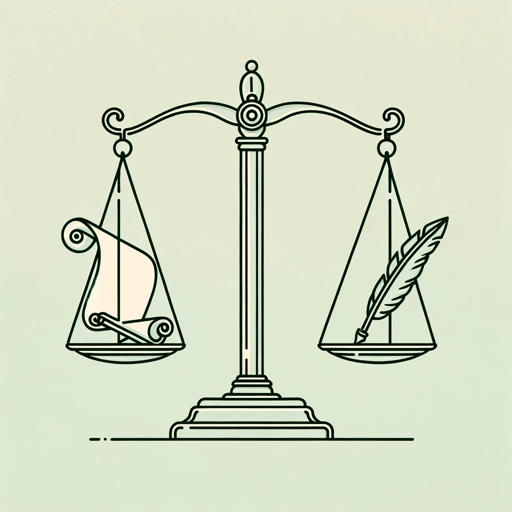
33 pages • 1 hour read
A modern alternative to SparkNotes and CliffsNotes, SuperSummary offers high-quality Study Guides with detailed chapter summaries and analysis of major themes, characters, and more.
Essay Analysis
Key Figures
Symbols & Motifs
Literary Devices
Important Quotes
Essay Topics
Discussion Questions

Ideological Context: The Glorious Revolution
Alexander Pope was born in 1688, the year of the “Glorious Revolution” in England, when James II of England was overthrown by his daughter, Queen Mary, and her Dutch husband, William of Orange (who then became William III of England). James II was overthrown in part because he was believed to be Roman Catholic and thus unfit to lead Protestant Great Britain. By the time of Pope’s rise in popularity, Queen Anne (James’s other daughter) was on the throne; she would be the last Stuart monarch before the Hanover George I was brought in to replace the Stuart line in 1714.
At this time, The Test Acts (1673) meant that Roman Catholic subjects in Great Britain could not hold public office since the government required office-holders to take communion in the Anglican (Church of England) Church; the Test Acts were not repealed until 1829. As a result, one of the most significant sociohistorical contexts for Pope’s writing, and in particular for his role as a critical voice in this era, is his overt Catholicism coupled with the anti-Catholic sentiment that prevailed in 18th-century Great Britain.
Get access to this full Study Guide and much more!
- 7,400+ In-Depth Study Guides
- 4,950+ Quick-Read Plot Summaries
- Downloadable PDFs

Don't Miss Out!
Access Study Guide Now
Related Titles
By Alexander Pope
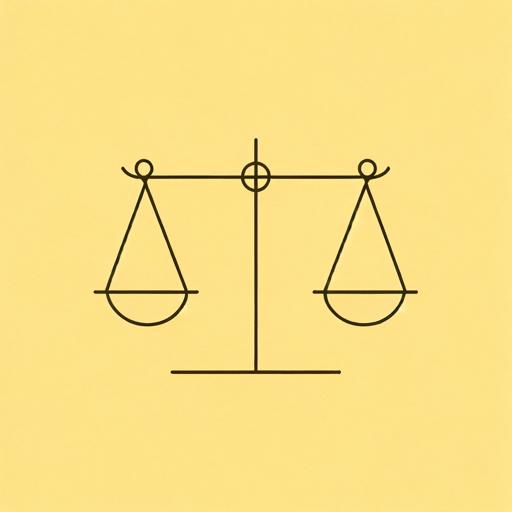
An Essay on Man
Alexander Pope

Eloisa to Abelard

The Dunciad

The Rape of the Lock
Featured Collections
View Collection
Books About Art
Books & Literature
British Literature Wiki

An Essay on Criticism
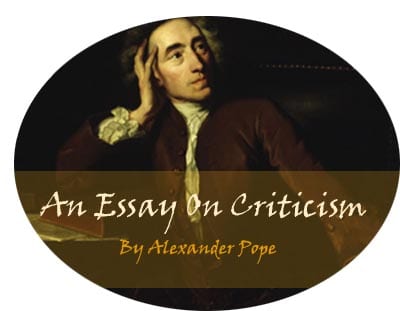
Alexander Pope wrote An Essay on Criticism shortly after turning 21 years old in 1711. While remaining the speaker within his own poem Pope is able to present his true viewpoints on writing styles both as they are and how he feels they should be. While his poetic essay, written in heroic couplets, may not have obtained the same status as others of his time, it was certainly not because his writing was inferior (Bate). In fact, the broad background and comprehensive coverage within Pope’s work made it it one of the most influential critical essays yet to be written (Bate). It appears that through his writing Pope was reaching out not to the average reader, but instead to those who intend to be writers themselves as he represents himself as a critical perfectionist insisting on particular styles. Overall, his essay appears to best be understood by breaking it into three parts.
The scholar Walter Jackson Bate has explained the structure of the essay in the following way:
I. General qualities needed by the critic (1-200):
1. Awareness of his own limitations (46-67). 2. Knowledge of Nature in its general forms (68-87).
- Nature defined (70-79).
- Need of both wit and judgment to conceive it (80-87).
3. Imitation of the Ancients, and the use of rules (88-200).
- Value of ancient poetry and criticism as models (88-103).
- Censure of slavish imitation and codified rules (104-117).
- Need to study the general aims and qualities of the Ancients (118-140).
- Exceptions to the rules (141-168).
II. Particular laws for the critic (201-559): Digression on the need for humility (201-232):
1. Consider the work as a total unit (233-252). 2. Seek the author’s aim (253-266). 3. Examples of false critics who mistake the part for the whole (267-383).
- The pedant who forgets the end and judges by rules (267-288).
- The critic who judges by imagery and metaphor alone (289-304).
- The rhetorician who judges by the pomp and colour of the diction (305-336).
- Critics who judge by versification only (337-343).
Pope’s digression to exemplify “representative meter” (344-383). 4. Need for tolerance and for aloofness from extremes of fashion and personal mood (384-559).The fashionable critic: the cults, as ends in themselves, of the foreign (398-405), the new (406-423), and the esoteric (424-451).
- Personal subjectivity and its pitfalls (452-559).
III. The ideal character of the critic (560-744):
1. Qualities needed: integrity (562-565), modesty (566-571), tact (572-577), courage (578-583). 2. Their opposites (584-630). 3. Concluding eulogy of ancient critics as models (643-744).
To uncover the deeper meaning of An Essay on Criticism click here
Back to Alexander Pope
- Project Gutenberg
- 73,281 free eBooks
- 15 by Alexander Pope
An Essay on Criticism by Alexander Pope
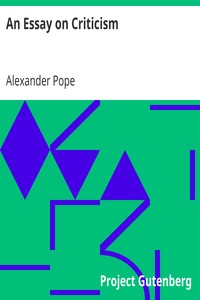
Read now or download (free!)
Similar books, about this ebook.
- Privacy policy
- About Project Gutenberg
- Terms of Use
- Contact Information

Pope exposes confidential details of past conclaves, settles scores with Pope Benedict XVI’s aide
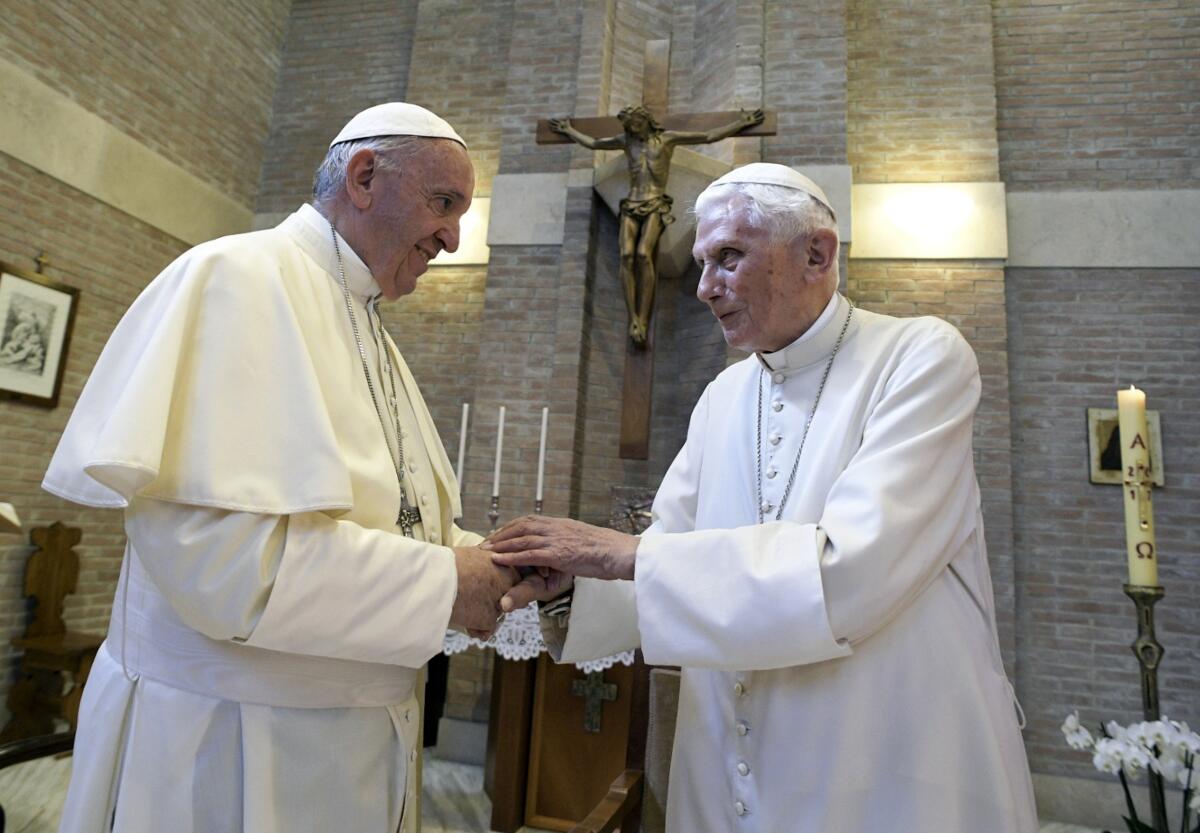
- Show more sharing options
- Copy Link URL Copied!
Pope Francis has exposed the political “maneuvers” used to sway votes during the two most recent elections of popes, while denying he is planning to reform the process for future conclaves, in a book-length interview published Tuesday.
The confidential revelations are contained in “The Successor: My Memories of Benedict XVI,” in which the Argentine pope reflects on his relationship with the late German pope and settles some scores with Benedict’s longtime aide.
The book, written as a conversation with the correspondent for Spain’s ABC daily, Javier Martínez-Brocal, comes at a delicate time for the 87-year-old Francis. His frail health has raised questions about how much longer he will remain pope, whether he might follow in Benedict’s footsteps and resign, and who might eventually replace him.
In the book, Francis revealed previously confidential details about the 2005 conclave that elected Benedict pope and the 2013 ballot in which he himself was elected, saying he was allowed to deviate from the cardinals’ oath of secrecy because he is pope.

World & Nation
Pope acknowledges criticism and health issues but says in new memoir he has no plans to retire
Pope Francis says he has no plans to step down and isn’t suffering from any health problems that would require him to do so.
March 16, 2024
In 2005, Francis said, he was “used” by cardinals who wanted to block the election of Benedict — then Cardinal Joseph Ratzinger — and that they managed to sway 40 out of 115 votes his way. The idea wasn’t to elect the Argentine but rather to force a compromise candidate after knocking Ratzinger out of the running, he said.
“They told me afterward that they didn’t want a ‘foreign’ pope,” — in other words, a non-Italian one — Francis said, making clear that the process wasn’t so much about the Holy Spirit inspiring cardinals as it was a cold, hard political calculus.
Francis said he put an end to the maneuvering by announcing that he wouldn’t accept being pope, after which Ratzinger was elected.
“He was the only one who could be pope in that moment,” Francis said, adding that he, too, voted for Ratzinger.
In 2013, after Benedict’s resignation, there was more political maneuvering. Francis — who at the time was Cardinal Jorge Mario Bergoglio — said he only realized after the fact that cardinals were coalescing behind him, pestering him with questions about the church in Latin America and dropping hints that he was gaining support.
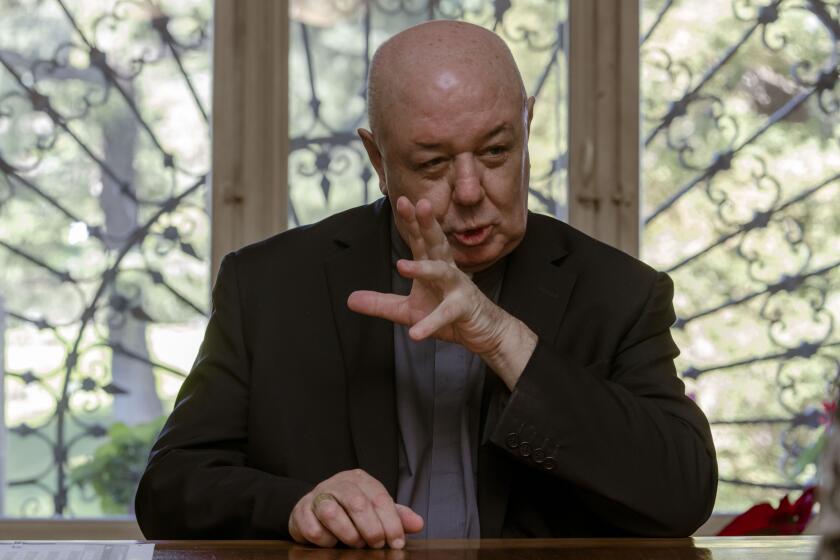
The keeper of the Vatican’s secrets is retiring. Here’s what he wants you to know
The longtime keeper of the Vatican Apostolic Archive is spilling the beans for the first time, revealing some of the secrets he uncovered over 45 years.
Feb. 19, 2024
He said it finally dawned on him that he might be pope when Spanish Cardinal Santos Abril y Castelló came running after him after lunch on March 13, just before what would become the final ballot.
The Spanish cardinal had what was clearly a health-related question about Bergoglio’s ability to take on the physical rigors of the papacy, after opponents apparently had raised his health as a possible impediment to his election.
“Eminence, is it true you’re missing a lung?” Francis recounted Abril as saying, to which he replied that he had part of one lung removed after a respiratory infection. After he assured the cardinal that the operation had taken place more than 50 years earlier, he remembered Abril muttering: “Oh these last-minute maneuvers…”
Francis in the interview denied rumors he is planning any reform of the conclave rules for a future papal election.
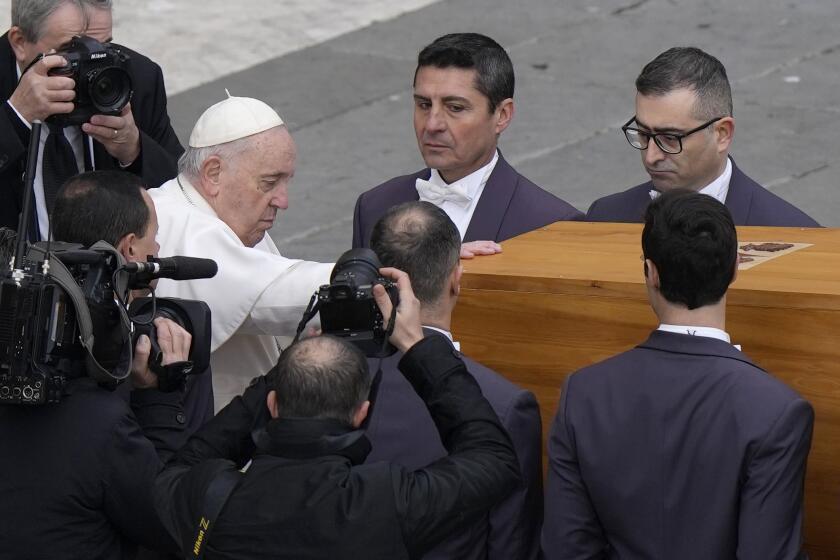
Thousands mourn Benedict XVI at a funeral presided over by Pope Francis
As bells tolled, thousands of people mourned Pope Emeritus Benedict XVI at a rare requiem Mass for a dead pontiff presided over by a living one.
Jan. 5, 2023
Conservative media have speculated, without any attribution, that Francis was tinkering with the protocols to limit pre-conclave discussions about the needs of the church to cardinals aged under 80. Only those cardinals — most of whom were appointed by Francis — are able to vote for the next pope, but older colleagues are currently allowed to take part in the earlier discussions.
While Francis denied any such reform, he revealed he was revising the protocol for papal funerals. Francis said Benedict’s would be “the last wake in which the body of a pope is exposed in an open coffin, on a bier.”
He said he wanted to ensure popes “are buried like any son of the church,” in a dignified, but not excessive manner.
In the book, Francis also settles some scores with Benedict’s longtime secretary, Archbishop Georg Gaenswein, whom he initially fired and then exiled from the Vatican after what he described as a series of imprudent decisions that “made life difficult for me.”
Retired Pope Benedict reemerges to step into the roiling clergy sex abuse debate
The former Pope Benedict XVI receives visitors at his secluded residence in the Vatican’s gardens, but if they gripe about his successor, Pope Francis, he is said to have a way of changing the subject.
April 14, 2019
Gaenswein is widely believed to have helped fuel the anti-Francis opposition during Benedict’s decade-long retirement, allowing Benedict to be used by conservatives nostalgic for his doctrinaire papacy. He was behind some of the biggest hiccups in the unusual cohabitation of two popes.
Francis reveals details about one well-known incident in 2020, in which Cardinal Robert Sarah, the conservative former Vatican liturgy chief, co-authored a book with Benedict reasserting the need for a celibate priesthood.
The book was published at the precise moment Francis was considering calls to relax celibacy requirements and allow married priests in order to address a shortage of clergy in the Amazon. It caused a stir because Benedict’s participation in the book raised the prospect of the former pope trying to influence the decision-making of a current one.
Francis squarely blames Gaenswein for the affair, insisting that Sarah was a “good man” who perhaps was “manipulated by separatist groups.” Francis said he felt compelled to sideline Gaenswein after the ruckus.

Pope Francis skips Palm Sunday homily at start of busy Holy Week that will test his health
Pope Francis has decided at the last minute to skip his homily during Palm Sunday Mass in St. Peter’s Square.
March 24, 2024
“I was obliged to ask Benedict’s secretary to take a voluntary leave, but keeping the title of prefect of the papal household and the salary,” Francis said.
Gaenswein later sealed his fate with Francis when he published a tell-all memoir, “Nothing But the Truth,” in the days after Benedict’s Dec. 31, 2022, death that was highly critical of Francis.
“It pained me that they used Benedict. The book was published on the day of his burial, and I felt it was a lack of nobility and humanity,” Francis said.
Francis insisted that Benedict always deferred to him, defended him and supported him and was not behind any of the conservative attacks or maneuvers to undermine his authority.
He denied that his dry homily during Benedict’s funeral, criticized by conservatives as lacking praise, was a sign of anything other than liturgical protocol.
“You don’t deliver eulogies in homilies,” he said.
Winfield writes for the Associated Press.
More to Read
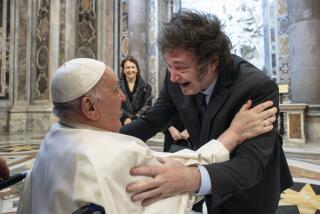
Pope and Argentine President Milei embrace after pontiff canonizes Argentina’s first female saint
Feb. 11, 2024

Pope Francis wants to be buried in Rome basilica, not in the Vatican
Dec. 13, 2023
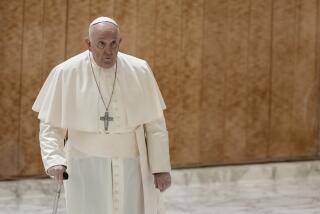
Pope ‘much better’ after bronchitis bout but still tires if he speaks too much
Dec. 6, 2023
Start your day right
Sign up for Essential California for news, features and recommendations from the L.A. Times and beyond in your inbox six days a week.
You may occasionally receive promotional content from the Los Angeles Times.
More From the Los Angeles Times

From film sets to farms, visa changes for foreign workers could burden some California businesses

Column: It’s not just RFK Jr.: Biden faces serious danger from third-party candidates

RFK Jr. speaks candidly about his gravelly voice
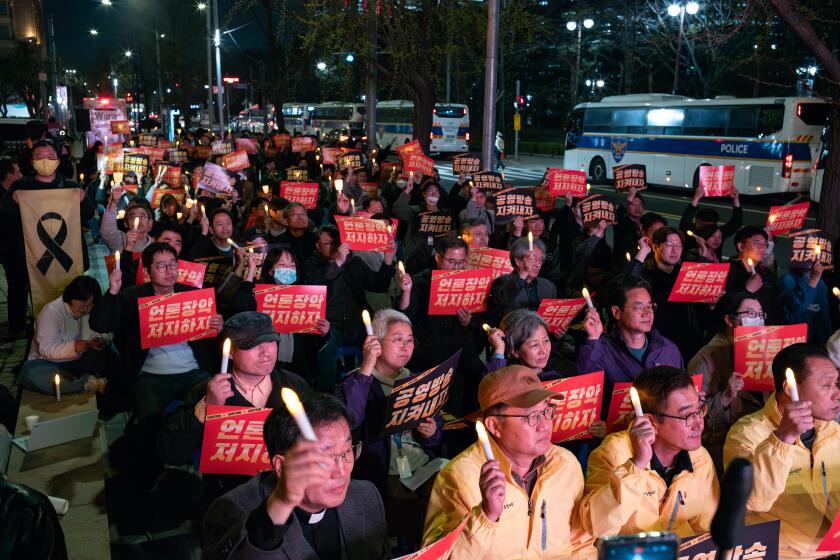
Raids, fines and digging through underwear drawers: Korean president’s war on ‘fake news’

IMAGES
VIDEO
COMMENTS
Alexander Pope's "An Essay on Criticism" seeks to lay down rules of good taste in poetry criticism, and in poetry itself. Structured as an essay in rhyming verse, it offers advice to the aspiring critic while satirizing amateurish criticism and poetry. The famous passage beginning "A little learning is a dangerous thing" advises would-be critics to learn their field in depth, warning that the ...
Summary. "An Essay on Criticism" is a three-part poem in which Alexander Pope shares his thoughts on the proper rules and etiquette for critics. Critics assail Pope's work, his background, his religion, and his physical appearance throughout his career. Pope has a lot to say to critics about their common mistakes and how they could do their job ...
An Essay on Criticism Summary " An Essay on Criticism" by Alexander Pope is a long, three-part poem about the nature of poetry and criticism. In the first part, the speaker of the poem describes ...
An Essay on Criticism (1711) was Pope's first independent work, published anonymously through an obscure bookseller [12-13]. Its implicit claim to authority is not based on a lifetime's creative work or a prestigious commission but, riskily, on the skill and argument of the poem alone. It offers a sort of master-class not only in doing….
The argument of An Essay on Criticism is broken into three parts. The first focuses on what Pope sees as the over-abundance of literary critics in the early 18th century. Pope argues that it takes as much skill to be a critic as it does to be a writer but that people often venture beyond their natural talents; further, while many people do have the capacity for good taste, some have been ...
An Essay on Criticism. An Essay on Criticism is one of the first major poems written by the English writer Alexander Pope (1688-1744), published in 1711. It is the source of the famous quotations "To err is human; to forgive, divine", "A little learning is a dang'rous thing" (frequently misquoted as "A little knowledge is a dang'rous thing ...
An Essay on Criticism, didactic poem in heroic couplets by Alexander Pope, first published anonymously in 1711 when the author was 22 years old.Although inspired by Horace's Ars poetica, this work of literary criticism borrowed from the writers of the Augustan Age.In it Pope set out poetic rules, a Neoclassical compendium of maxims, with a combination of ambitious argument and great ...
Pope primarily used the heroic couplet, and his lines are immensely quotable; from "An Essay on Criticism" come famous phrases such as "To err is human; to forgive, divine," "A little learning is a dang'rous thing," and "For fools rush in where angels fear to tread.". After 1718 Pope lived on his five-acre property at ...
An Essay on Criticism, frontispiece. Published in 1711, Alexander Pope 's poem An Essay on Criticism is a series of finely-wrought epigrams on the art of writing and one of the most quoted poems ...
Alexander Pope's profound understanding of literary criticism in a masterful and thought-provoking manner. From the very beginning, Pope captivates the reader with his witty and eloquent writing style, compelling them to delve deeper into the realm of literary analysis. In this essay, Pope embarks on a journey to explore the art of criticism ...
Analysis. Last Updated September 5, 2023. Alexander Pope 's long three-part poem "An Essay on Criticism" is largely influenced by ancient poets, classical models of art, and Pope's own ...
An Essay on Criticism. 'Tis hard to say, if greater want of skill. Appear in writing or in judging ill; But, of the two, less dang'rous is th' offence. To tire our patience, than mislead our sense. Some few in that, but numbers err in this, Ten censure wrong for one who writes amiss; A fool might once himself alone expose, Now one in verse ...
"An Essay on Criticism" is in the form of a rhyming poem, but its content is akin to a nonfiction essay detailing and supporting Pope's arguments about writers and critics. ... This study guide for Alexander Pope's An Essay on Criticism offers summary and analysis on themes, symbols, and other literary devices found in the text. Explore Course ...
Pope's "Essay on Criticism" is a didactic poem in heroic couplets, begun, perhaps, as early as 1705, and published, anonymously, in 1711. The poetic essay was a relatively new genre, and the "Essay" itself was Pope's most ambitious work to that time. It was in part an attempt on Pope's part to identify and refine his own positions as poet and ...
An Essay on Criticism: Part 1. By Alexander Pope. Si quid novisti rectius istis, Candidus imperti; si non, his utere mecum. [If you have come to know any precept more correct than these, share it with me, brilliant one; if not, use these with me] (Horace, Epistle I.6.67) PART 1. 'Tis hard to say, if greater want of skill.
A short 15 min study guide with a summary and line by line analysis on Alexander Pope's An Essay on Criticism. This is only the part that's in the #GCSE curr...
The themes in "An Essay on Criticism" are the principles of artistic greatness and the pursuit of poetry as a life-long endeavor. The principles of artistic greatness: Pope discusses the qualities ...
These were followed by the Essay on Criticism, 1711; Rape of the Lock (when completed, the most graceful, airy, and imaginative of his works), 1712-1714; Windsor Forest, 1713; Temple of Fame, 1715. In a collection of his works printed in 1717 he included the Epistle of Eloisa and Elegy on an Unfortunate Lady , two poems inimitable for pathetic ...
Get unlimited access to SuperSummaryfor only $0.70/week. Subscribe. Thanks for exploring this SuperSummary Study Guide of "An Essay on Criticism" by Alexander Pope. A modern alternative to SparkNotes and CliffsNotes, SuperSummary offers high-quality Study Guides with detailed chapter summaries and analysis of major themes, characters, and more.
Alexander Pope's Essay on Criticism was written by him in 1709 when he was barely twenty years old, and published in 1711.. E on C has become a landmark of criticism in English Literature for two ...
Overview. Alexander Pope wrote An Essay on Criticism shortly after turning 21 years old in 1711. While remaining the speaker within his own poem Pope is able to present his true viewpoints on writing styles both as they are and how he feels they should be. While his poetic essay, written in heroic couplets, may not have obtained the same status ...
An Essay on Criticism: Part 2. Is pride, the never-failing vice of fools. And fills up all the mighty void of sense! Make use of ev'ry friend—and ev'ry foe. And drinking largely sobers us again. New, distant scenes of endless science rise! Hills peep o'er hills, and Alps on Alps arise!
15 by Alexander Pope. An Essay on Criticism by Alexander Pope. Read now or download (free!) Choose how to read this book Url Size; Read online (web) ... An Essay on Criticism Credits: Produced by Ted Garvin, David Garcia and the Online Distributed Proofreading Team. Language: English: LoC Class:
April 2, 2024 10:19 AM PT. VATICAN CITY —. Pope Francis has exposed the political "maneuvers" used to sway votes during the two most recent elections of popes, while denying he is planning ...